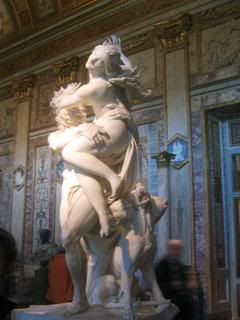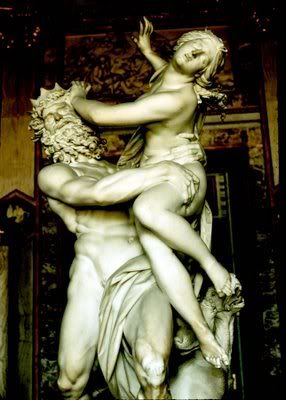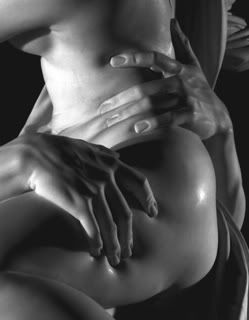Throughout all of my travels while on study abroad, it was the statuary in the small and enchanting family owned Galleria Borghese in Rome that I remember most distinctly. More specifically it was the pieces done by the artist Bernini that truly left their mark.
Current mood elicits reminiscing on one of my favorite sculptures, Bernini's The Rape of Persephone... So... Let's blog it out.
Mythology dictates that Hades fell in Love with Demeter's ('earth mother' and goddess of the harvest) daughter Persephone and made a deal with Zeus that allowed him to capture Persephone as his wife and drag her down with him to the underworld.

From this angle, Cerberus, Hades' three headed dog, is visible and snarling. The statue depicts the abduction of Persephone as she is captured.
The myth goes on that Demeter searched in sadness for many months for her daughter Persephone. During this time the world laid waste as she neglected her godly duties. Zeus realizing that there would be no sacrifices without the harvest eventually tells Demeter of Persephone's fate.

In this more forward facing image, you can see how Bernini caught the struggle as Persephone tries to evade capture from Hades. Her arms are outstretched as she ineffectually tries to push Hades away. Cerberus is shown to be nipping at Persephone's feet.
When Demeter learns of what has befallen her daughter, she rushes to the underworld to reclaim her. Before she arrives however, Persephone is tricked into eating six pomegranate seeds (an ancient tradition dictates that one not eat at the place of capture). Persephone is allowed to leave with her mother, but because she had eaten the seeds she was forced to return to spend part of each year in the underworld with Hades. It is during this time of year that we experience the winter season as Demeter longs in sadness for her daughter. Each year Demeter resumes her work upon the return of her daughter. It is for this reason that Persephone is known as the goddess of spring.

It's hard to remember when you sense the soft rebound of Persephone's skin under Hades' grasp that this statue is carved in stone. This is one of the features that made this sculpture so memorable to me.
So... Those are my thoughts... and I suppose my mythology lesson... for the day. There were other statues at the Borghese that were equally breath-taking including Bernini's Appollo and Daphne, which coincidentally is pictured in the lower right corner of my blog header (I made the collage) and Bernini's David. Maybe another day I'll write more on those.
Until then, enjoy!
No comments:
Post a Comment